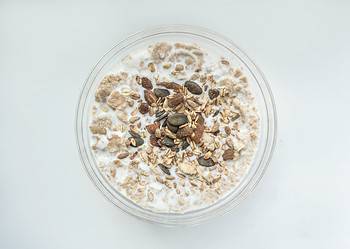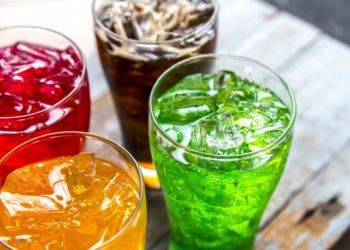If you’ve noticed a golden-hued drink gracing Instagram feeds and café menus, you’ve come across the turmeric latte. This warm, vibrant beverage has swiftly risen in popularity, becoming a mainstay for many baristas. Now, a team of scientists have developed an “instant” version of the drink — a true version of the drink, not one with flavoring or taste replacements. The version stays true to the healthy nature of the drink while also extending its shelf life.

Golden milk
A turmeric latte, also known as “golden milk,” is a blend of turmeric and cow’s milk or a dairy-free alternative. The drink often includes other spices like cinnamon, ginger, and black pepper, which enhance both its flavor and health benefits. Honey or maple syrup is typically added for sweetness, though some prefer to enjoy it without any added sugars.
However, the turmeric latte is not a new idea. It’s essentially a reinvented version of the haldi doodh — a traditional Indian beverage used in Ayurvedic medicine as an at-home cold remedy. Turmeric drinks are popular in several parts of Asia and seem to have originated from the Japanese island of Okinawa. Here, locals believe “turmeric juice” helps with longevity.
“It’s a very good beverage, especially if it’s cold outside, or if you’re sick,” explains Anthony Suryamiharja, a graduate student at the University of Georgia.
The star ingredient, turmeric, is a bright yellow-orange spice common in South Asian cuisine. It comes from the root of the Curcuma longa plant, and its primary active compound is curcumin, a polyphenol known for its potent anti-inflammatory and antioxidant properties.
Especially in the context of modern diets, where processed foods and environmental stressors can contribute to chronic inflammation, a turmeric latte offers a natural way to incorporate anti-inflammatory benefits into your daily routine — no surprise it’s becoming more popular. However, curcumin is difficult to separate and turn into an instant version.
Instant turmeric latte
Typically, separating curcumin requires energy-intensive, complex techniques that involve solvents that work for days. The process also results in a shorter shelf life for the product. So, Suryamiharja, Hualu Zhou, and colleagues wanted to see if there’s a better way to approach this. The thinking was that, since most people consume the drink with plant-based milk, maybe there’s a way to store curcumin directly within the plant-based milk.
They began by adding turmeric powder to an alkaline solution, where the high pH made the curcumin more soluble and easier to extract compared to plain water. This resulted in a deep red solution, which was then mixed with soy milk, turning the mixture a dark yellow. To make it safe for consumption, they adjusted the pH to a neutral level around 7. Both low-pH acids and high-pH bases can be unpleasant to ingest.
While the neutralized golden milk was immediately consumable, the team decided to further preserve it by removing the water through freeze-drying, creating an instant golden milk powder.

This process has another benefit: it encapsulates curcumin in oil droplets within the soy milk. This makes the human body recognize curcumin as fat and digest it better, absorbing it more efficiently.
For now, researchers have only developed this process with soy milk but it could be used with other plant-based milks, the team notes. In fact, the same technique could be used to mix plant milks with other compounds as well. For instance, you could make an instant blueberry milk. This is what the team is working on now.
“When we use the same method, within around a minute we can extract the polyphenols,” Zhou concludes. “We want to try and use it to upcycle byproducts and reduce the food waste from fruit and vegetable farming here in Georgia.”
The research was presented at the ACS Fall 2024.






